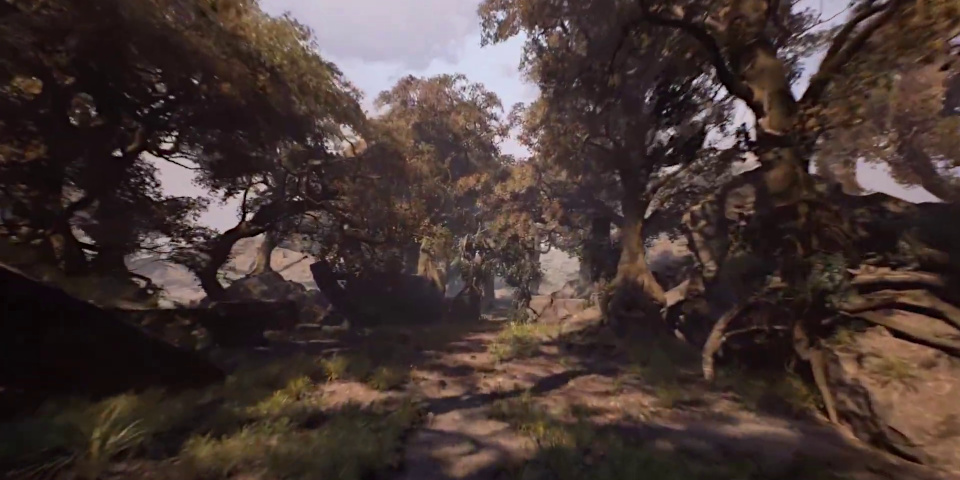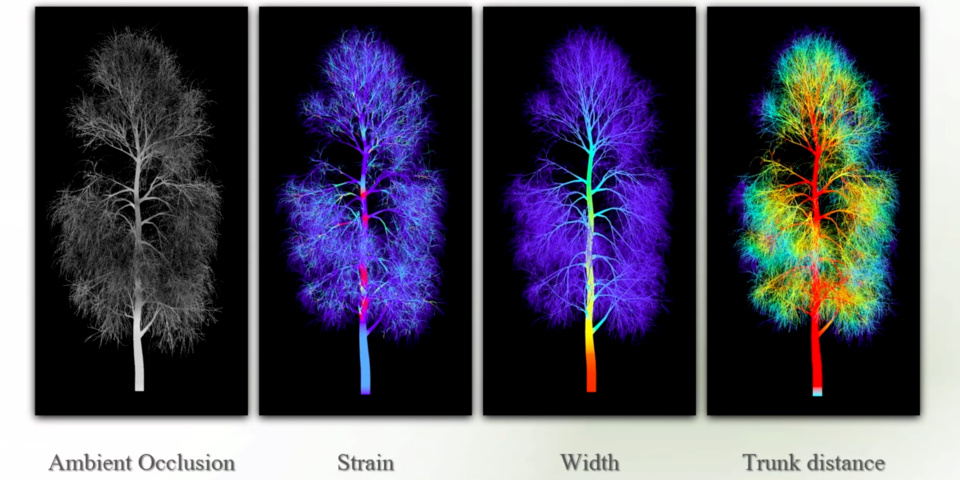Houdini plant-generation toolkit Natsura is now in early access
A presentation by Natsura co-creator Feike Postmes from SIGGRAPH Asia 2024 introducing the Houdini vegetation-modeling toolset, which is now available in early access.
Natsura has released Natsura, its interesting Houdini plant-generation plugin, in early access.
It enables users to create 3D trees for games and visual effects pipelines using a combination of parametric modeling, botanical simulation and rules-based controls.
The toolset was recently used on Project Elderwood, SideFX’s new tech demo showcasing procedural workflows for creating natural environments in Houdini and Unreal Engine.
An interesting new toolset for generating 3D vegetation for games and VFX
Pitched as a toolset for teams who need “high levels of control and efficiency in foliage generation”, Natsura is intended to generate 3D vegetation, particularly trees, in a way that fits with real-world production pipelines in game development, animation and visual effects.
It combines a range of approaches for generating the overall forms of plants, including botanical simulation to mimic the way that real plants respond to their environment, and parametric modelling to enable artists to shape the plants manually.
According to Natsura, it generates node-based recipes that define the ‘DNA’ of a plant, which can then be fed into any solver within Houdini to generate dynamic effects like wind animation.
The toolset makes use of APEX, Houdini’s new graph evaluation framework, to maintain high performance, even in complex production scenes.

Uses a flexible, modular, node-based workflow
You can see the workflow for generating a 3D plant in the video at the top of the story.
Work is carried out within the standard Houdini interface, with some elements hidden to make it more accessible to new users.
The trunk of the tree is generated as a chain of nodes, with controls for patterns of branching, and gravitropism and phototropism: the way that the tree grows in response to gravity and light.
It is also possible to use collision objects to define how the growth form of the tree is affected as it comes into contact with surrounding objects.
According to the presentation, it was possible to generate the birch tree shown in the image above in “around an hour”, with the resulting network of 31 nodes shown on the right.

Integrates well into production workflows, generating highly flexible output
One potential selling point for Natsura over established plant-generation solutions for games and VFX, like SpeedTree, is the way it integrates into Houdini workflows.
The toolset was used on Project Elderwood, SideFX’s new tech demo on creating natural environments suitable for games in Houdini and Unreal.
Natsura’s co-founders, 3D Artist George Hulm and tools developer and former Square Enix Technical Artist Feike Postmes, both worked on Project Elderwood.
Another is the flexibility and granularity of its output: the image above shows data that can be extracted from a Natsura growth simulation.
As well as more familiar information like branch thickness, it includes maps showing the distance of each branch from the central trunk, and strain on the trunk and branches.
Could be integrated with 3D scan data, and with Unreal Engine’s PCG framework
You can find more information on how Natsura could be integrated into production workflows in George Hulm’s presentation from Unreal Fest 2024.
In it, he discusses approaches including using 3D scans for the trunk of a tree, and fusing it with a canopy generated inside Natsura; and using Unreal Engine’s PCG framework to instance leaves onto trees in-engine.
Price, system requirements and release date
Natsura is compatible with Houdini 20.5. It is currently available in early access. There isn’t an official release date yet.
Natsura tells us that on its commercial release, the plugin will be “competitively priced”, and that it plans to offer both perpetual licenses and subscriptions.
Read more about Natsura on the product website
Have your say on this story by following CG Channel on Facebook, Instagram and X (formerly Twitter). As well as being able to comment on stories, followers of our social media accounts can see videos we don’t post on the site itself, including making-ofs for the latest VFX movies, animations, games cinematics and motion graphics projects.
